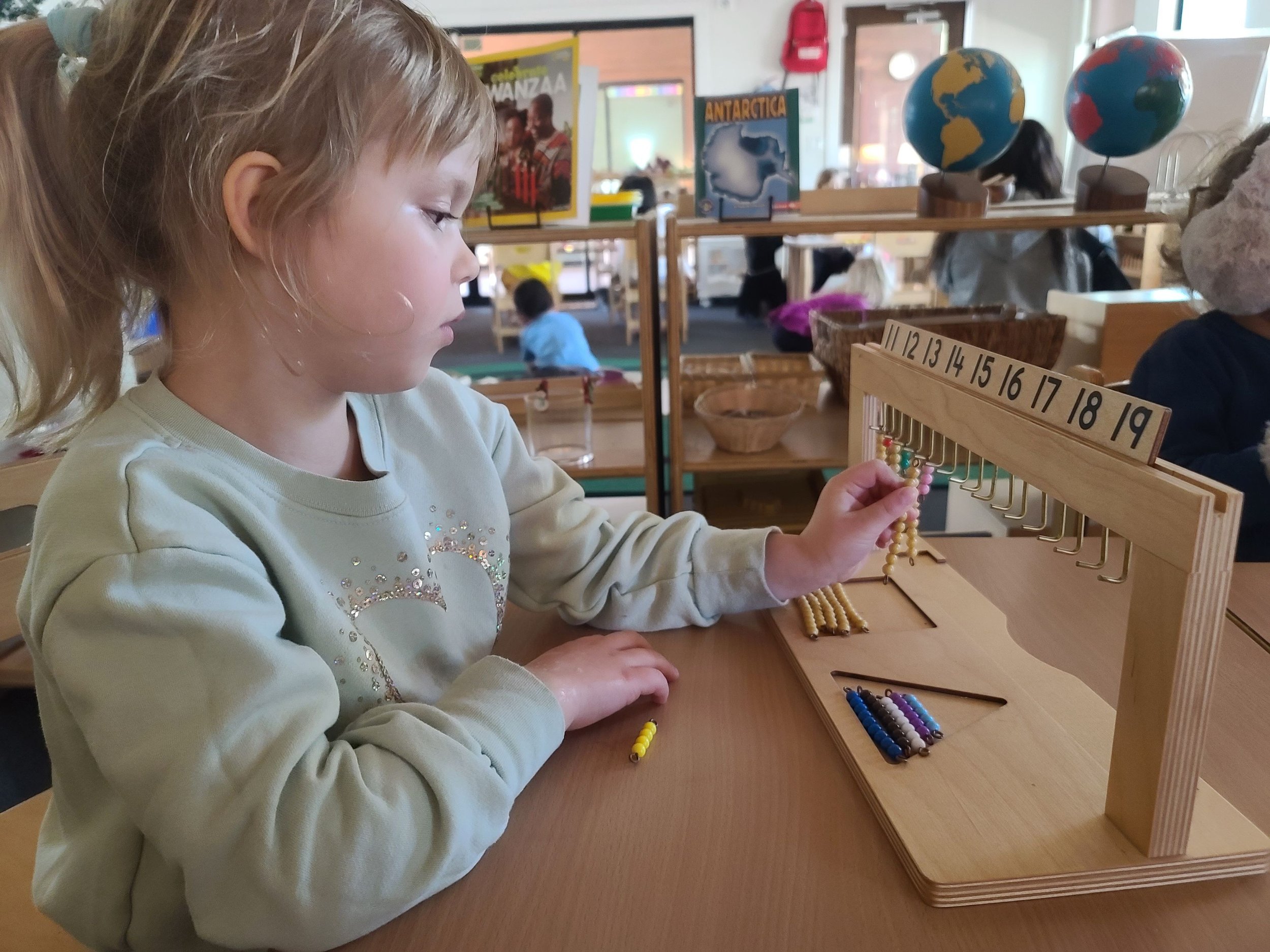CHILDREN’S HOUSE
Students at Mariposa Montessori from three through six years of age enjoy the benefits of a three-year curriculum designed specifically for them. The Montessori early childhood classroom, or Children’s House, is an environment designed to meet the needs of the children. Children need real work to prepare them for real life. "Never do for a child what he can do for himself," Maria Montessori once stated.
The heart of the classroom and curriculum for the first year students is in the practical life and sensorial materials. In working with these materials, guided by the trained Montessori instructor, the students develop their motor skills, master sequential activities, and literally develop their brains through working with their senses. Social skills are important throughout the three years, and begin to blossom when the three-year olds learn what it means to be part of a community.
The second-year and third-year children build upon each previous year becoming leaders and mentors to the younger children. Children learn readily from one another, and the younger ones thrive under the tutelage of the five and six year olds. It is in the second and third years that the children are given more academic lessons.Montessori taught us to move from the concrete to the abstract. For example, we enrich the vocabulary of the young child before asking them to decode the symbols of written language. We allow the child to hold 1000 beads in their hands before understanding that a numeral represents a quantity.
Graduates of the Mariposa Montessori Children’s Houses go on to our elementary program with all the tools they need to succeed. Their confidence and self-reliance set them apart from other students. Their problem-solving skills and their integrity serve them well as they move forward in life. We invite you to schedule an observation in one of our children’s houses to see the Montessori philosophy in action.
Benchmarks for our Primary Program
Benchmarks are a series of skills a student will acquire over the course of their time in a program. One of the key components of the Montessori approach is the 3-year age groupings. Our curriculum is laid out in a three-year schedule as opposed to traditional programs that use an annual plan. These groupings are based on phases of child development and allow us to deemphasize grade levels. We can then respect each student’s own unique path towards mastery. Everyone has their own internal timeline for development and learning. It is normal for children to learn in spurts and have periods of time where the acquisition of certain skills takes precedence over others. Our format allows students the gift of time, while still ensuring they meet state curriculum requirements.
Development
Lengthening attention span
Ease of transition from one activity to another
Observation skills; observes others or a lesson
Demonstrates community awareness
Completes tasks – development of work cycle
Shows respect for materials and environment
Language
Reading
Learns letter sounds
Learns phonogram combinations, cvc words, blends and sight words
Learns to identify the beginning, middle and ending of a story
Able to identify a vowel vs. a consonant
Can tell a simple story and follow a train of thought
Writing
Finger dexterity development is supported through Sensorial and Practical Life work
Uses the dynamic tripod grasp when holding a pencil
Learns cursive and manuscript writing (all uppercase and lowercase letters)
Composes written sentences
Introduction to punctuation, applies capitalization and ending punctuation to written work
Precision with Metal Insets
Math
What we call “pre-math” skills, such as pattern recognition, size differentiation, etc., begin with Practical Life and Sensorial work
Introduction to the stamp game, understands exchanging and carrying
Understands addition and subtraction facts (strip board or object addition)
Reads numbers to the thousands
Understanding of the decimal system
Use of teens and tens boards
Writing equations on paper with operation symbol and answer line
Demonstrates understanding of addition and subtraction
Uses multiples with all long bead chains
Introduction to fractions
Count and recognize numbers 1-100 with materials
Write numbers 1-10
Identify coins and currency
Tells time to the hour and half hour
Knows the months of the year and the days of the week
Geometry
Quadrilaterals and Polygons nomenclature
History/Cultural Studies/Geography
Knows their birthday
Knows the name of the continents and oceans
Planet names and order
Familiarity with land and water forms



